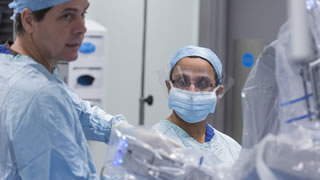
The aim of language mapping during awake craniotomy is to minimise the effect the surgery has on the persons language skills post surgery whilst maximising the tumour removal or control of the presenting epilepsy.
There has been a considerable rise in publications looking at awake craniotomies for brain tumours and epilepsy in the years from 1994-2013; from 3,070 to 17,500 per year. As a result there is better understanding of how language is understood/stored/produced in the brain with all parties recognising the move from specific sites of language focus such as that of Broca’s and Wernicke’s regions. However, many of these papers focus on individual factors and areas of the brain. Therefore, in order to develop an efficient and effective method of mapping language these papers must be synthesised. The researcher therefore intends to start their investigation into this area by conducting a systematic review.
Language mapping during awake craniotomy
Why map language?
The aim of language mapping during awake craniotomy is to minimise the effect the surgery has on the persons language skills post surgery whilst maximising the tumour removal or control of the presenting epilepsy.
What is the current interest in this area?
There has been a considerable rise in publications looking at awake craniotomies for brain tumours and epilepsy in the years from 1994-2013; from 3,070 to 17,500 per year. As a result there is better understanding of how language is understood/stored/produced in the brain with all parties recognising the move from specific sites of language focus such as that of Broca’s and Wernicke’s regions. However, many of these papers focus on individual factors and areas of the brain. Therefore, in order to develop an efficient and effective method of mapping language these papers must be synthesised. The researcher therefore intends to start their investigation into this area by conducting a systematic review. Since starting to do language mapping in awake craniotomies in 2012, the researcher has been aware of the above factors whilst wishing to optimise the language mapping. Recent reading and reflection has prompted them to examine their practice with the goal being to research currently published English language based assessment that allows for the environmental/patient based limitations whilst meeting the language mapping needs of phonology, syntax and semantic measurements.
Researcher
Helen Spear
Stef Ticehurst
Funder
Pat Charitable Fund, North Bristol NHS Trust Speech and Language Therapy service.
